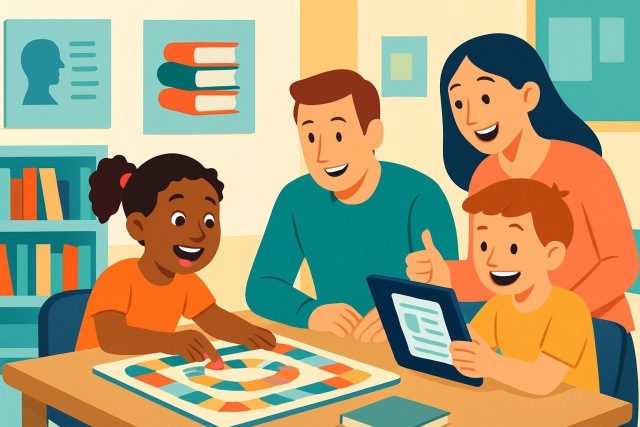CAFE Reading Strategies Framework for Elementary Teachers

The CAFE Reading Strategies Framework brings a fresh spin to helping elementary teachers boost their students’ reading and comprehension skills. Cooked up by literacy pros Gail Boushey and Joan Moser, it’s become a go-to resource that gently nudges readers toward greater independence and confidence.
Getting to Know the CAFE Reading Strategies Framework A Friendly Introduction
The CAFE framework breaks down into four essential ingredients for effective reading instruction: Comprehension, Accuracy, Fluency and Expanding vocabulary. Think of it as a handy roadmap that helps teachers focus on the right strategies for each student and boost their overall literacy skills.
- Comprehension strategies help students connect with texts on a deeper level by using techniques like predicting what might come next and asking thoughtful questions.
- Accuracy techniques give students tools to decode words correctly and catch themselves when things don’t quite add up—a handy skill in their reading toolkit.
- Fluency practices focus on speeding up reading while keeping the flow smooth and expressive so reading feels less like a chore and more like a natural conversation.
- Vocabulary expansion methods help learners pick up new words and understand their meanings from context, making tricky words less intimidating.
Since its debut in the early 2000s the CAFE framework has earned a solid reputation backed by a broad range of literacy research that points to its ability to boost reading achievement. Time and again studies highlight improvements in fluency and comprehension and a noticeable jump in student engagement—something every teacher can appreciate. The approach gels perfectly with the gradual release of responsibility model and gently nudges students toward independence through regular check-ins and goal-setting.
Putting CAFE Reading Strategies into Practice in the Elementary Classroom with a Hands-On Approach
Elementary teachers usually roll out the CAFE framework one bite at a time during their daily reading lessons. They keep an eye on students' skills, help set clear and achievable goals and offer plenty of guided practice along the way.
Introduce the CAFE framework to students using down-to-earth everyday language that sticks.
Use diagnostic assessments as your GPS to pinpoint where students are shining and where they need a tune-up in each category.
Team up with students to set personalized reading goals that truly match their unique CAFE needs—no cookie-cutter stuff here.
Clearly show targeted strategies through think-alouds and guided examples. Lay out crystal-clear expectations so there’s no guesswork.
Offer guided practice in cozy small groups or one-on-one sessions where students try these strategies hands-on and build confidence.
Encourage independent reading time where students put CAFE strategies into play by themselves followed by quiet reflection and a chance to revisit those goals with fresh eyes.
Strategies for Understanding
Sometimes, getting a grip on a tricky concept feels like trying to catch smoke with your bare hands. But fear not — with the right approaches up your sleeve, things start to click much more smoothly. Let’s dive into some tried and true strategies that, in my experience, really help make sense of complex stuff without turning your brain into a tangled mess.
Within the CAFE framework, comprehension strategies help students roll up their sleeves and truly make sense of what they’re reading. Teachers guide them to predict what might come next by picking up on subtle clues and asking thoughtful questions that make them think. They untangle confusing bits and wrap up with clear summaries of key points. Handy tools like graphic organizers or story maps often come into play to jog memory and weave ideas together.
Strategies for Improving Accuracy
Getting things right is not just about luck—it takes some savvy moves and a bit of elbow grease. Here are some solid strategies to help sharpen your accuracy and keep those pesky mistakes at bay.
Accuracy strategies focus on nailing word recognition and adding self-corrections to boost reading confidence. These techniques typically use phonics instruction to crack unfamiliar words and teach students how to break down tricky multisyllabic words. They suggest well-timed pauses to catch slip-ups and develop tracking skills that keep reading crisp and on point.
Tried-and-True Tips to Improve Fluency That Actually Work
Fluency strategies are designed to help students read smoothly and with plenty of expression. Going over familiar texts several times not only speeds things up but also gives a real boost to confidence. Teachers usually model phrasing and intonation, showing students how to read with expression that truly supports the meaning.
Strategies to Build Your Vocabulary (Because who doesn’t want to sound a bit smarter every day?)
Vocabulary growth usually springs from digging into context clues and connecting the dots between words and breaking down their parts.
Evaluating Student Progress with the CAFE Framework
Assessment in the CAFE framework blends both formal and informal tools each suited to different elements. Teachers lean on reading inventories and running records as well as observation checklists and drills aimed at honing specific strategies to keep tabs on comprehension, accuracy, fluency and vocabulary growth.
| Assessment Tool | Purpose | Grade Suitability | Frequency | Sample Questions/Tasks |
|---|---|---|---|---|
| Running Records | Keep an eye on reading accuracy and fluency, catching those little slips and flows | K-5 | Weekly or every couple of weeks | Student reads aloud while teacher jots down mistakes and notes phrasing nuances |
| Reading Inventories | Get the full picture of comprehension and reading levels, making sense of how students really understand the text | 1-5 | Quarterly | Students answer questions about the text and recap key ideas in their own words |
| Strategy Checklists | Keep tabs on how students are using those handy CAFE strategies | K-5 | Ongoing | Teacher observes and records the ways students apply strategies during reading |
| Vocabulary Quizzes | Check how well students are picking up new words and their meanings | 2-5 | Monthly | Define words or cleverly use context clues to unlock meanings |
| Fluency Timed Readings | Measure how quickly and expressively students read — because speed isn’t everything, but it sure helps! | K-5 | Weekly | Timed reading passages to track words per minute and monitor phrasing flair |
| Student Self-Assessments | Encourage kids to reflect on their own reading progress and take charge of their learning | 3-5 | Monthly or as the moment calls for it | Students rate how comfortable they feel with strategies and set personal goals |
Taking a good hard look at assessment data lets teachers tailor their lessons to fit each student like a glove, spotting which strategies have clicked and which ones could use a bit more help.
Tried-and-True Strategies and Handy Tips for Keeping Your Classroom on Track When Using CAFE
- Organize students into flexible groups that share common reading strategy goals, making it easier to deliver targeted and focused instruction that really hits the mark.
- Carve out regular and dedicated time for small group sessions and individual reading practice. Consistency here is key because it helps build solid reading habits.
- Encourage students to participate in setting their own reading goals. This little bit of ownership can work wonders for boosting motivation and engagement.
- Foster a culture of peer collaboration so students can swap strategies and lend each other a helping hand. Sometimes the best lessons come from a friend.
- Proudly display anchor charts around the classroom to serve as constant friendly reminders of the CAFE components, helping ideas stick without feeling overwhelming.
- Bring tech into the mix with reading apps or digital tracking charts that keep learners hooked and make progress monitoring feel less like a chore and more like a game.
Keeping motivation and consistency alive can be a real game-changer in classrooms where reading skills run the gamut. Celebrating those small wins frequently—and making sure expectations are crystal clear—goes a long way in helping students stay hooked and build their confidence as they grow their literacy skills.
"Using the CAFE framework has really shifted how my students dive into reading. They become way more engaged, set clear goals for themselves, and I can actually see steady progress week after week. It’s like moving teaching from a one-size-fits-all approach to something that truly feels tailor-made for each kid’s literacy journey." – Anna Martinez, Elementary Reading Specialist
Practical Examples and Lesson Ideas for Using CAFE Reading Strategies That Actually Work
You can really bring CAFE strategies to life through engaging classroom activities tailored for each part. These lessons don’t just teach—they help students truly get the hang of the strategies, all while keeping reading fun and interactive.
Use picture books to help students practice making predictions before they turn the page. Gently nudge them to share their thoughts out loud—it's amazing what little guesses can reveal about their thinking.
Hold decoding workshops focused on breaking down multisyllabic words during shared reading time. This turns what can feel like a mountain into manageable steps.
Set up readers' theater where students rehearse and perform passages, mixing fluency with a touch of theatrical flair that keeps things lively.
Play vocabulary games that invite students to guess word meanings through context clues, word maps or a bit of charades—because learning sticks better when you’re having fun along the way.
Navigating the Everyday Hurdles When Applying the CAFE Framework
Teachers often face a handful of challenges like addressing a wide range of reading levels and squeezing lessons into tight time slots. They also work hard to keep students—especially reluctant readers—actually interested.
- Tailor instruction by grouping students who share similar strategy needs, making it easier to offer support that really hits the mark for each group.
- Blend whole group lessons with targeted small groups to squeeze the most out of your precious time.
- Hook those reluctant readers with engaging texts and interactive activities that connect to their own experiences because relevance is key.
- Manage assessment demands by mixing quick, informal checks with well-planned formal assessments to keep the workload from becoming overwhelming.
Handy Tools and Resources That Make Implementing the CAFE Framework a Breeze
There are quite a few handy resources out there to help teachers master cafe reading strategies using the CAFE framework effectively. For starters, books like The Daily 5 by Boushey and Moser are often a go-to for many educators. Then, there are nifty interactive vocabulary apps like VocabularySpellingCity that make learning a bit more fun. Also worth mentioning are websites offering free graphic organizers and printable charts—perfect for keeping a close eye on student progress with various strategies.







